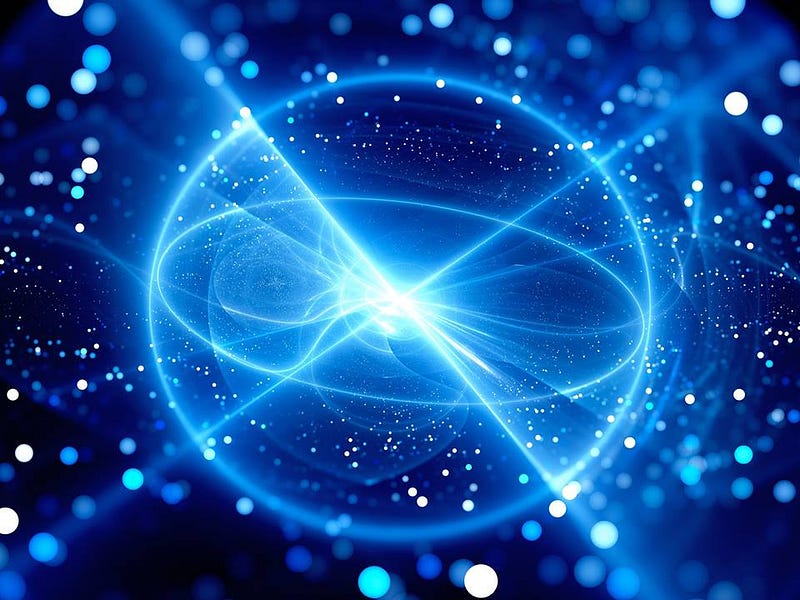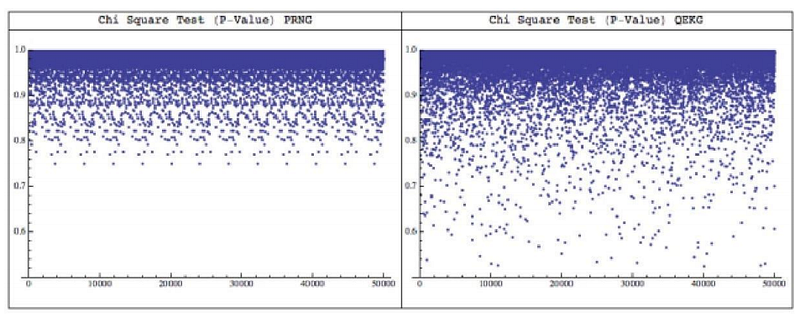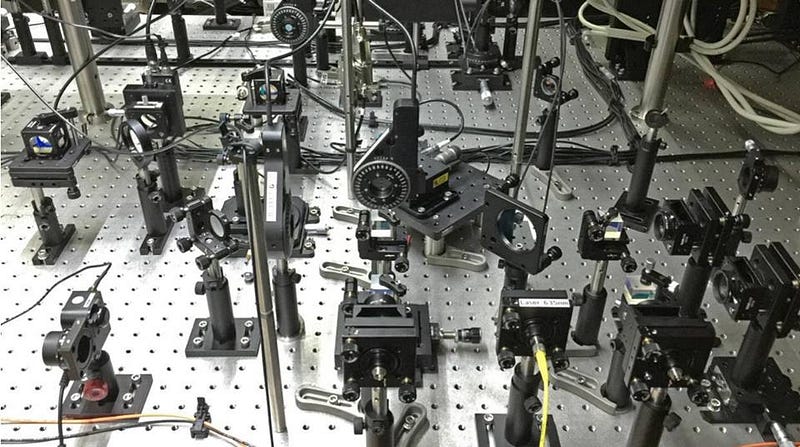Quantum-1Net adalah untuk menciptakan teknologi yang menguntungkan

The cryptographic platform RSA is now 40 years old. Despite the fact that it functioned well in the protection of the Internet and digital communications, this day is counted due to Moore's steady legal progress and the emergence of quantum computing. Significant efforts and resources are used by hackers to break RSA and in the form of encryption. With quantum computing, each quantum bit (called a qubit) can simultaneously be equal to zero and one. This difference means that Quantum computers can store more data and do more calculations per second, which makes it ideal for decoding applications. The growth of quantum computing makes the RSA split and other forms of encryption possible in the near future. A classic computer uses binary bits that have a value of 0 and 1.
Thanks to this technology of quantum computing on the threshold of a breakthrough, Quantum is ready to solve existing encryption methods. After RSA is hacked, mission-critical applications such as https, credit and debit processing, and government systems face the risk of direct compromise. The chaos of such a break-in really breaks the social and economic framework of everyday life.
Mission Quantum1Net
The mission of Quantum1Net is to create favorable and stimulating technologies. We have developed a very secure product, so you do not need to worry now or in the future about the security of your data. We are introducing an unprecedented level of technical innovation combined with the user's design of the system for security, ease of use and maximum peace of mind.
Quantum Computing
Quantum Computing allows quantums Quantum, called qubits to store large amounts of information, while at the same time it takes less energy for this. The result is a much better computer, capable of performing much more complex calculations and much faster than a regular computer
Conventional computers work by storing data in a series of bits, storing either 0 or 1. String bit lengths store information, but at one time, bits can have only one value or another value, so only one calculation. made at a time. Quantum calculations work in different ways. It is based on the unique behavior of subatomic particles, which can exist simultaneously in more than one country.
End of RSA encryption
Electronic communication was provided using a method known as RSA, named after three researchers who developed this method: Ron Rivest, Adi Shamir and Leonard Adleman. For production, more computing power is required, and then calculates these numbers, which is impossible with conventional computing technologies. The difficulty is illustrated in the 2009 study. The researchers found that 768 bits (232 digits) spent hundreds of machines and almost two years for burglaries, and RSA 1024 bit keys take up thousands of times more, and this is the smallest type of RSA key used. The reliability of RSA depends on traditional computational boundaries, and the technology is rapidly evolving, and the emergence of quantum computation inevitably requires a new encryption strategy. Much less resources and time to break even the most powerful RSA keys with quantum computing. Quantum calculations allow from the outset to resolve the first accounting threats for RSA encryption.
Quantum calculations and solution of codes
Before Quantum computers have a positive impact on the technology industry, their experience will also reveal security concerns. RSA depends on the complexity of a large number of factorizations for storing encrypted data. Because of its architecture, quantum computation becomes a direct solution to this problem. Since qubits have the advantage of having a state at the same time, called a superposition of circumstances, allowing many calculations, quantum computers become logical mechanisms for decomposing the code. The work is underway, and NIST expects that a quantum computer capable of breaking the RSA2048 within a few hours by 2030 will be bought for about a billion dollars.
Quantum encryption key
The Quantum Key encryption generator underlies the Quantum1Net encryption strategy. To view, generate a multi-valued random number, from which a mathematical property is derived in the case of primary factorization of RSA. However, there is one serious problem: random generators use only pseudorandom (commonly called PRNG), so RSA keys are pseudo-random. Tests show that PRNG shows repeated patterns of behavior when selecting random numbers. This template means that with sufficient results you can predict the choice of the number in the future. Thus, PRNG is not really random.

Quantum1Net instead uses the Quantum Encryption Key Generator (QEKG). Because of the nature of the quantum computer itself, tests have shown that in large samples the selected number does not match the pattern, so that a predictive algorithm can not be derived.

NSA and iQuantum Computas
Quantum Computing attracted the attention of US spy agencies. The leaked document by previous NSA contractor Ed Snowden in 2014 indicates that the agency is funding a $ 80 million project to build a very important quantum computer. NBA officials hope that such a machine will allow them to significantly improve their digital spying efforts. From these documents, it appears that the NSA is not close to a workable quantum computer, but still follows some of the world's leading quantum computing labs.
Quantum1Net prototype
The Quantum1Net random number generator, developed in 2014, is based on an optical qubit device that uses four photon detectors and a Time-to-Digital converter to create an ideal random number circuit. with timestamp Quantum devices are composed of elaborate photon sources and linear optical elements that determine the quantum system in the desired state. For each set of elements 4 and 6, two configurations are developed.

Quantum markers
Quantum1Net launches two types of tokens: the first silver token, which can be converted in February 2018 without quantum-key encryption, and unlimitedly released quantum keys extracted to the Golden Token in July 2018. Silver holders can change their properties for a discount. The full deployment of Token Gold and Quantum1Net is currently scheduled for January 2019.
ICO timeline
Number 1 sales marker: silver token
Based on Ethereal
February 2018
Convert to Gold token with discount 20%
Sales limit - 15 million
Sales bookmark number 2: Gold mark
July 2018
Bitcoin, including QEK
Silver Token investors get priority
Sales limit of 18 million
Trading Token # 3: Golden Token
January 2019
Bitcoin, activated by QE
Silver Silver Investors who convert sales in July 2018 can participate in 5%
The sales limit is 200 million
For more information, visit our website:
Website: https://quantum1net.com/
Technical documentation: https://quantum1net.com/Q1N%20white%20paper.pdf
Facebook: https://web.facebook.com/quantum1net
Twitter: https://twitter.com/quantum1net
Telegram: https://t.me/Quantum1Net
author: xabiru
My Profile: https://bitcointalk.org/index.php?action=profile;u=1847718
My eth: 0x178D3566b4FB09232BE5C3ee343D473445D1d36A

This graph shows the PRNG and QEKG test results with a sample size of 20,000 bits 50,000 times. By using PRNG, after 50,000 tests, it is visually proven that the data is prognostic even after the first 10,000 or more of the first experiment. However, with QEKG this is not so. Look at the bottom of the graph, where the dots are more scattered. Unlike PRNG charts, QEKG diagrams do not have a clear template for their location.
Quantum Computing attracted the attention of US spy agencies. The leaked document by previous NSA contractor Ed Snowden in 2014 indicates that the agency is funding a $ 80 million project to build a very important quantum computer. NBA officials hope that such a machine will allow them to significantly improve their digital spying efforts. From these documents, it appears that the NSA is not close to a workable quantum computer, but still follows some of the world's leading quantum computing labs.
Quantum1Net prototype
The Quantum1Net random number generator, developed in 2014, is based on an optical qubit device that uses four photon detectors and a Time-to-Digital converter to create an ideal random number circuit. with timestamp Quantum devices are composed of elaborate photon sources and linear optical elements that determine the quantum system in the desired state. For each set of elements 4 and 6, two configurations are developed.

TDC output or time to digital is the queue time from which you can request a set of random numbers or unique encryption keys, creating real-time encryption and decryption systems.
Quantum1Net launches two types of tokens: the first silver token, which can be converted in February 2018 without quantum-key encryption, and unlimitedly released quantum keys extracted to the Golden Token in July 2018. Silver holders can change their properties for a discount. The full deployment of Token Gold and Quantum1Net is currently scheduled for January 2019.
ICO timeline
Number 1 sales marker: silver token
Based on Ethereal
February 2018
Convert to Gold token with discount 20%
Sales limit - 15 million
Sales bookmark number 2: Gold mark
July 2018
Bitcoin, including QEK
Silver Token investors get priority
Sales limit of 18 million
Trading Token # 3: Golden Token
January 2019
Bitcoin, activated by QE
Silver Silver Investors who convert sales in July 2018 can participate in 5%
The sales limit is 200 million
For more information, visit our website:
Website: https://quantum1net.com/
Technical documentation: https://quantum1net.com/Q1N%20white%20paper.pdf
Facebook: https://web.facebook.com/quantum1net
Twitter: https://twitter.com/quantum1net
Telegram: https://t.me/Quantum1Net
author: xabiru
My Profile: https://bitcointalk.org/index.php?action=profile;u=1847718
My eth: 0x178D3566b4FB09232BE5C3ee343D473445D1d36A


Komentar
Posting Komentar